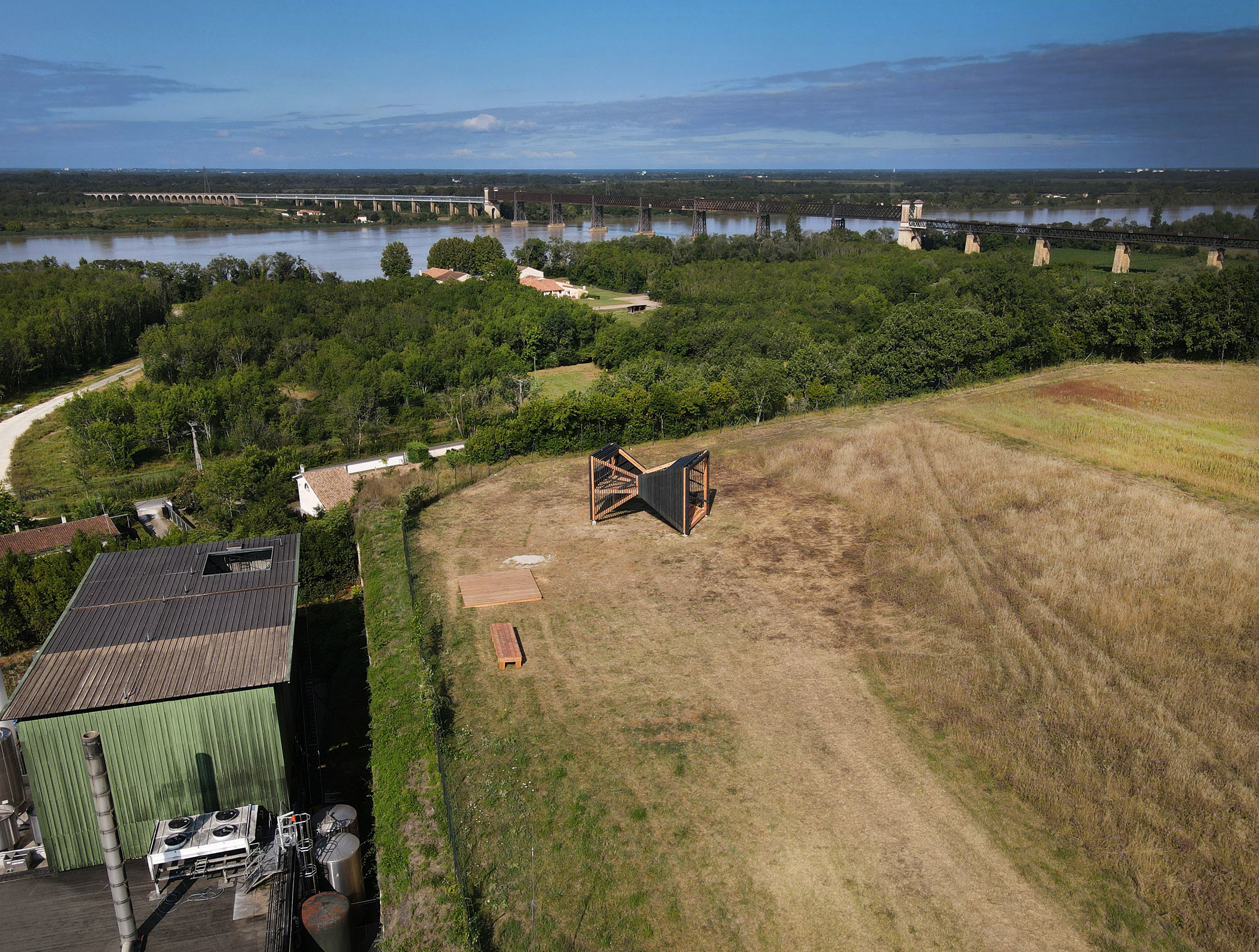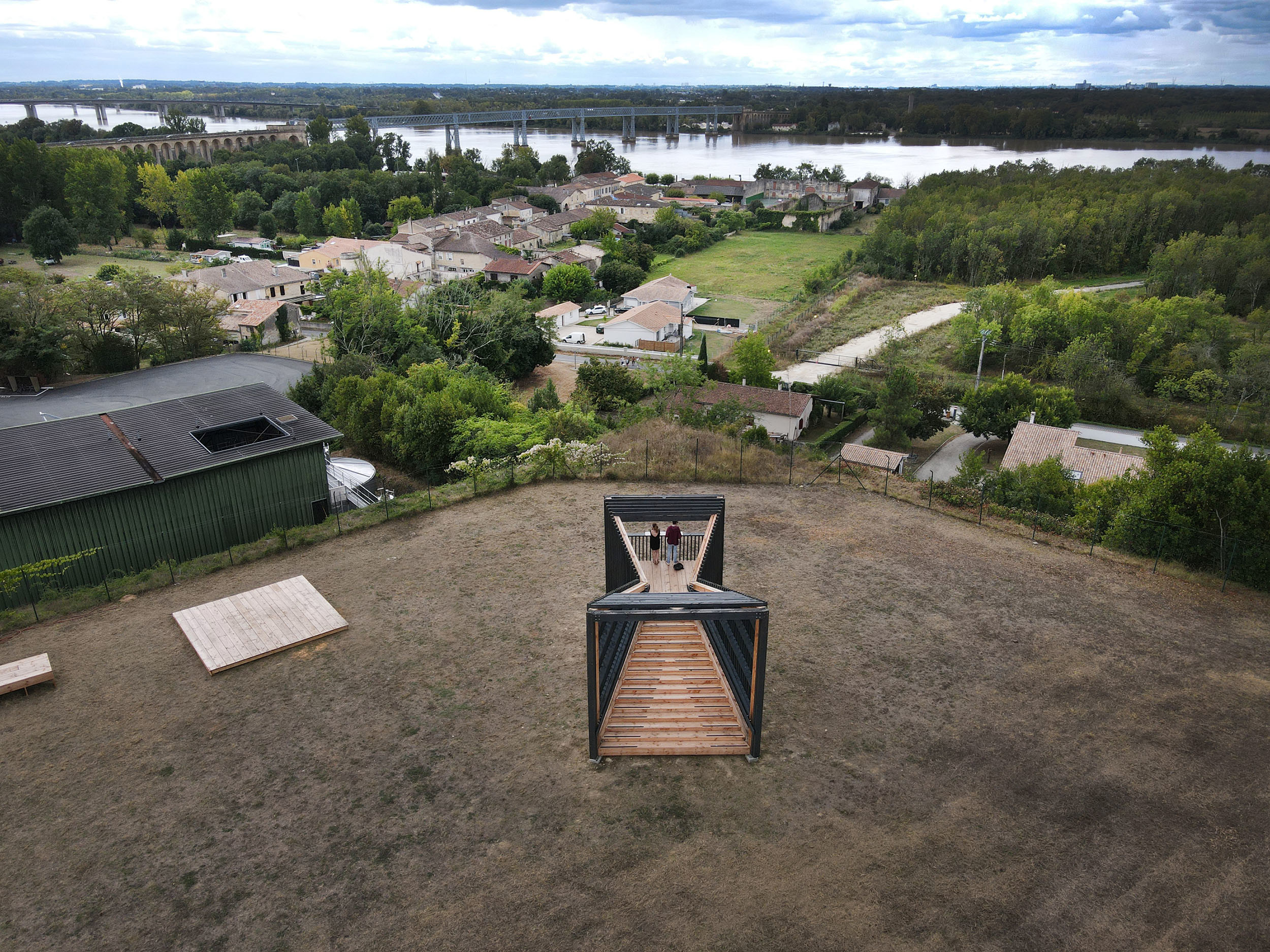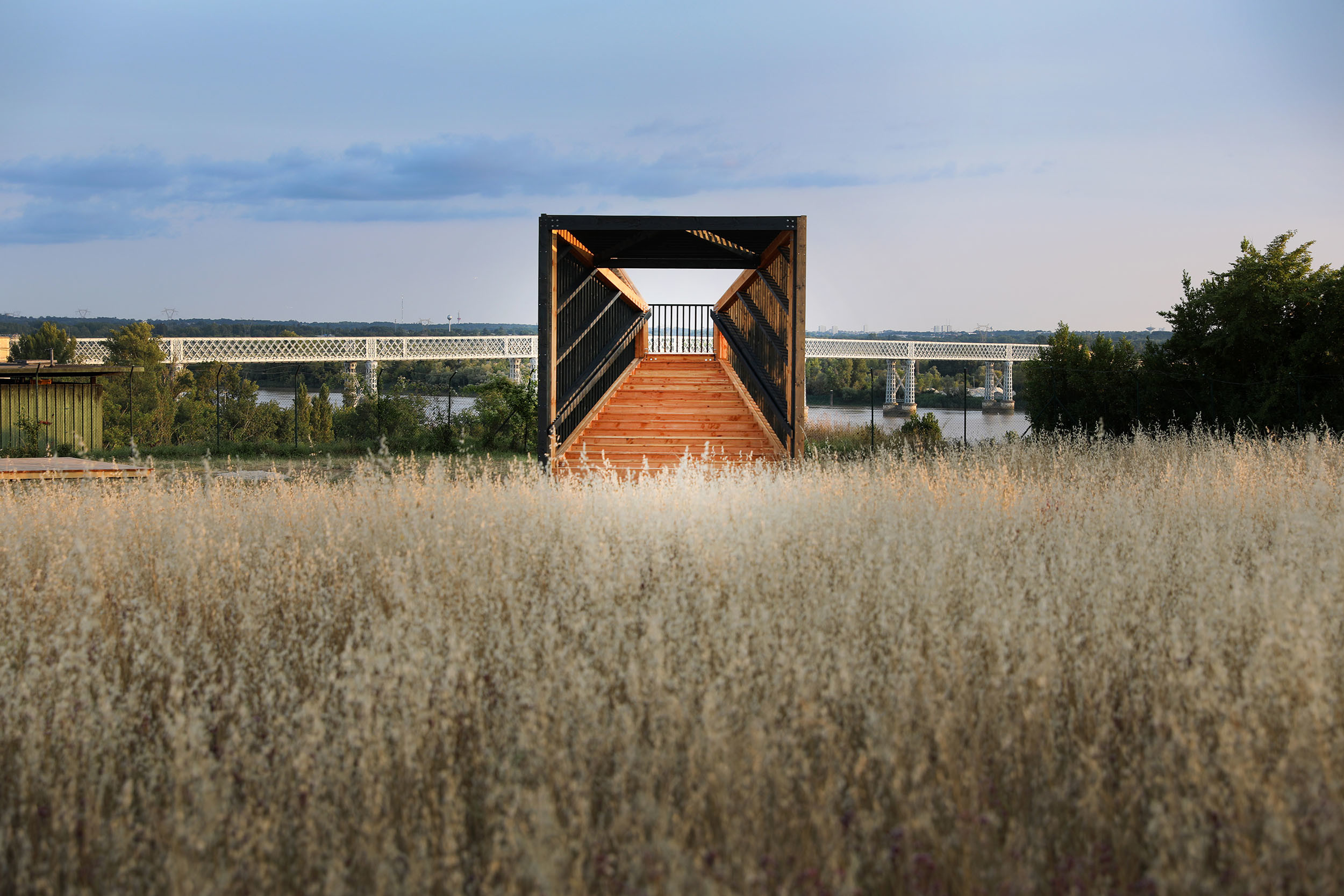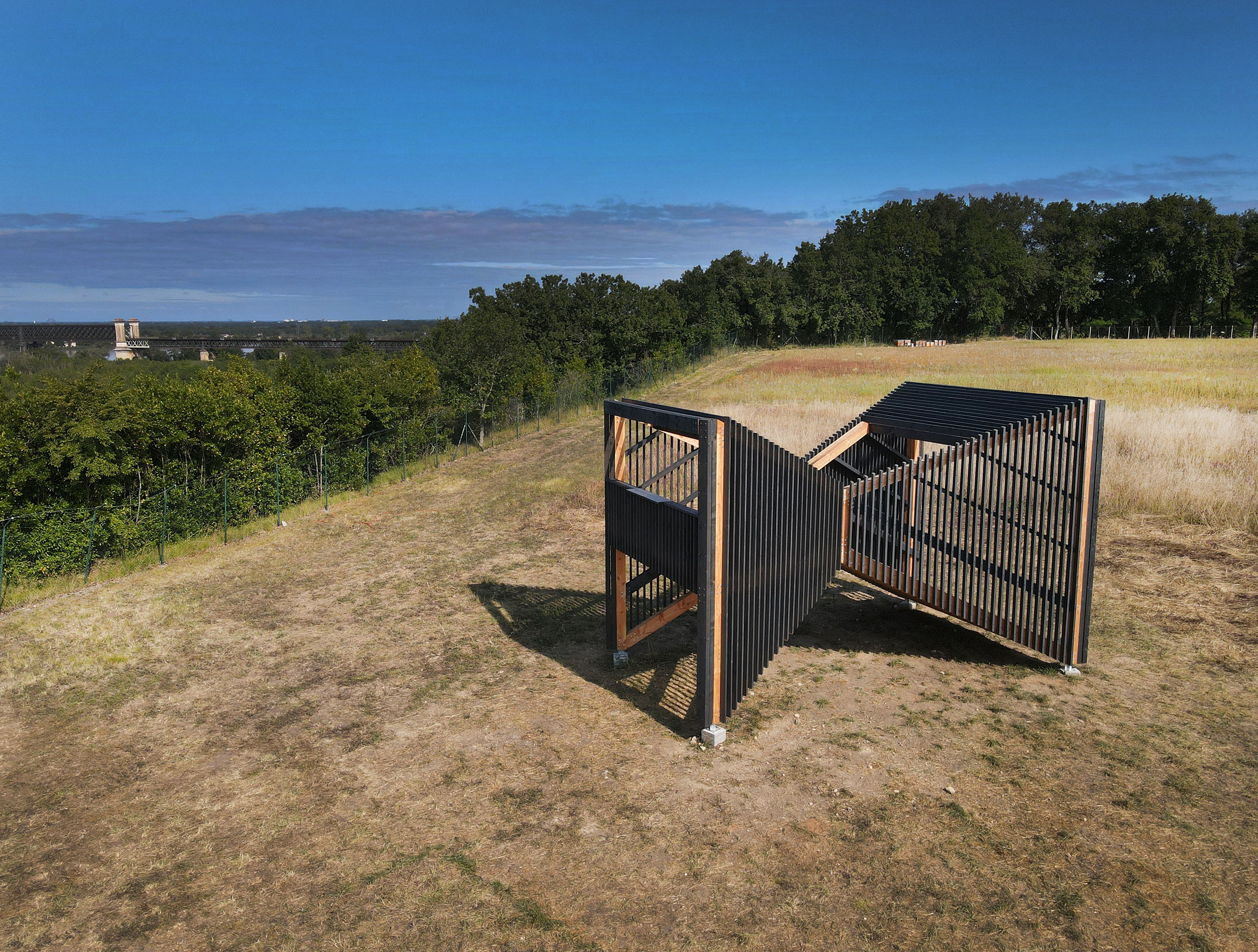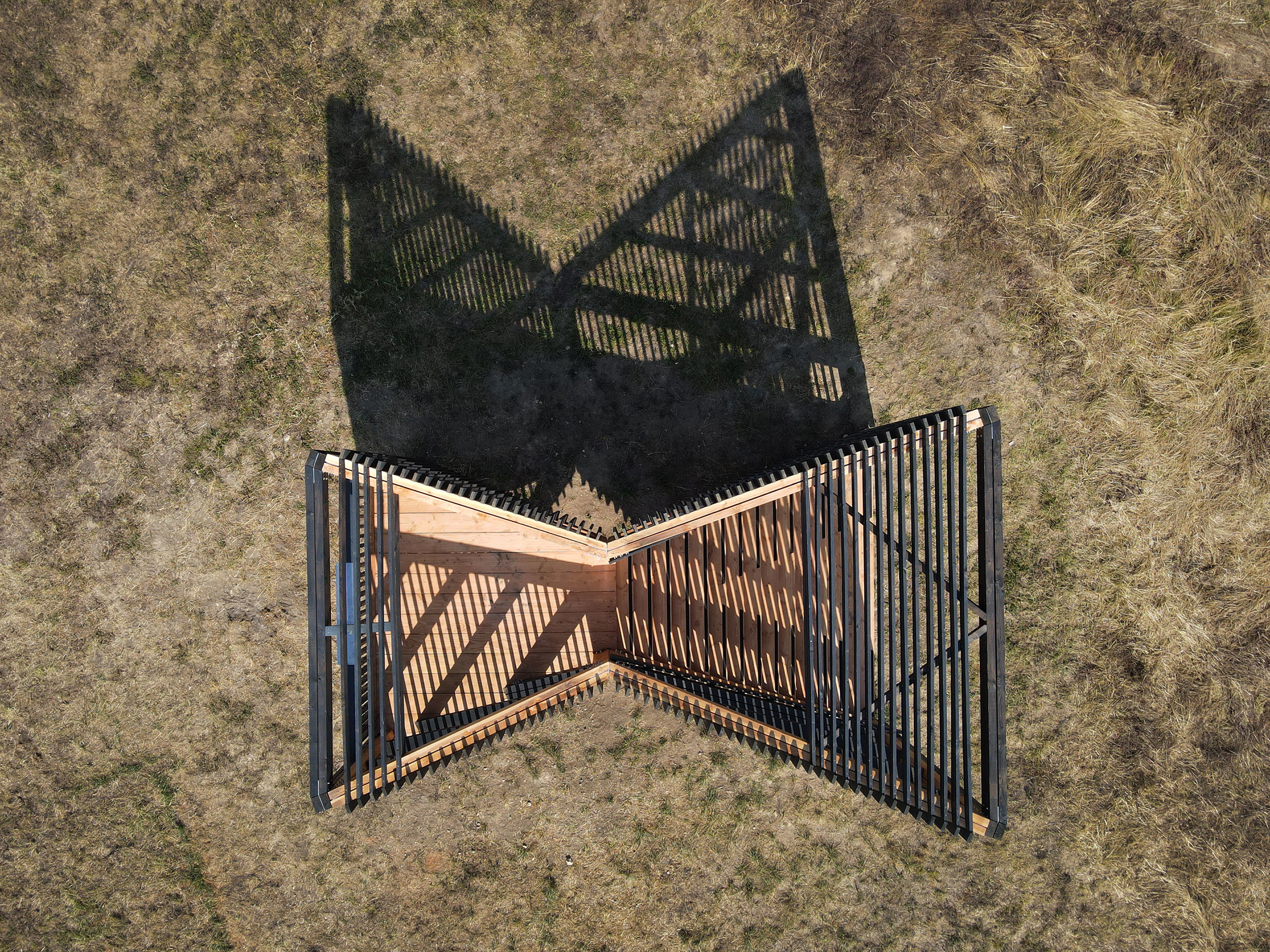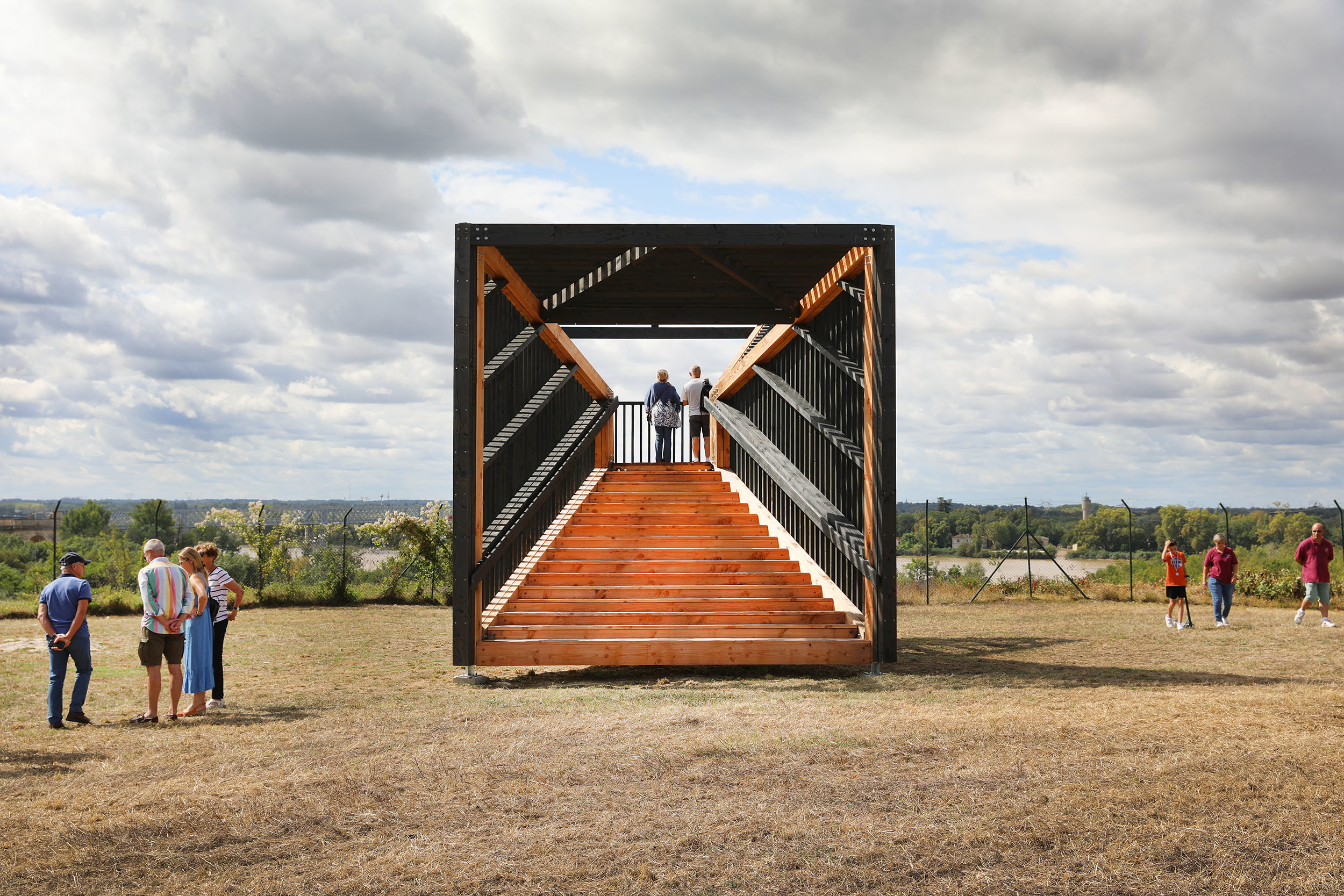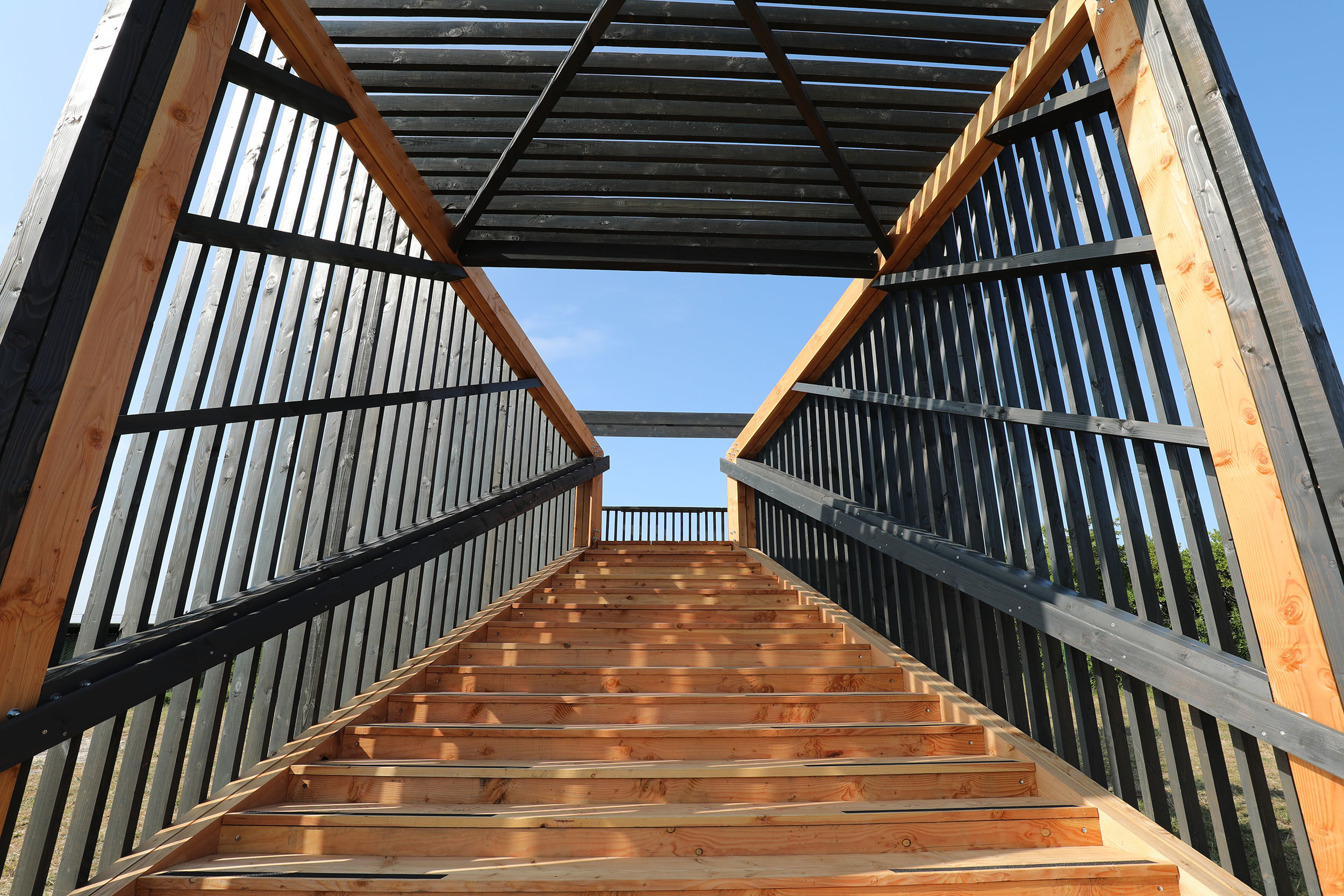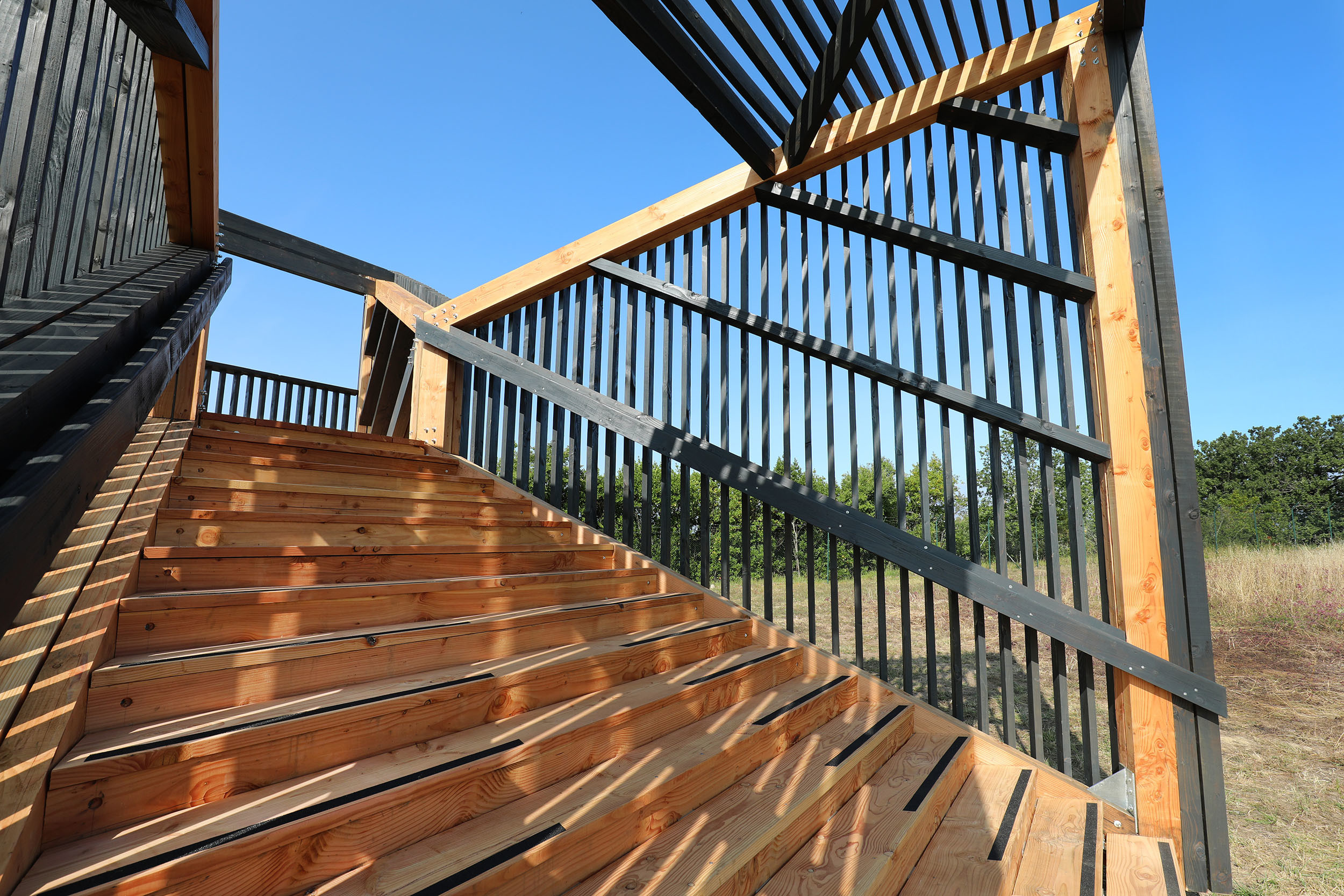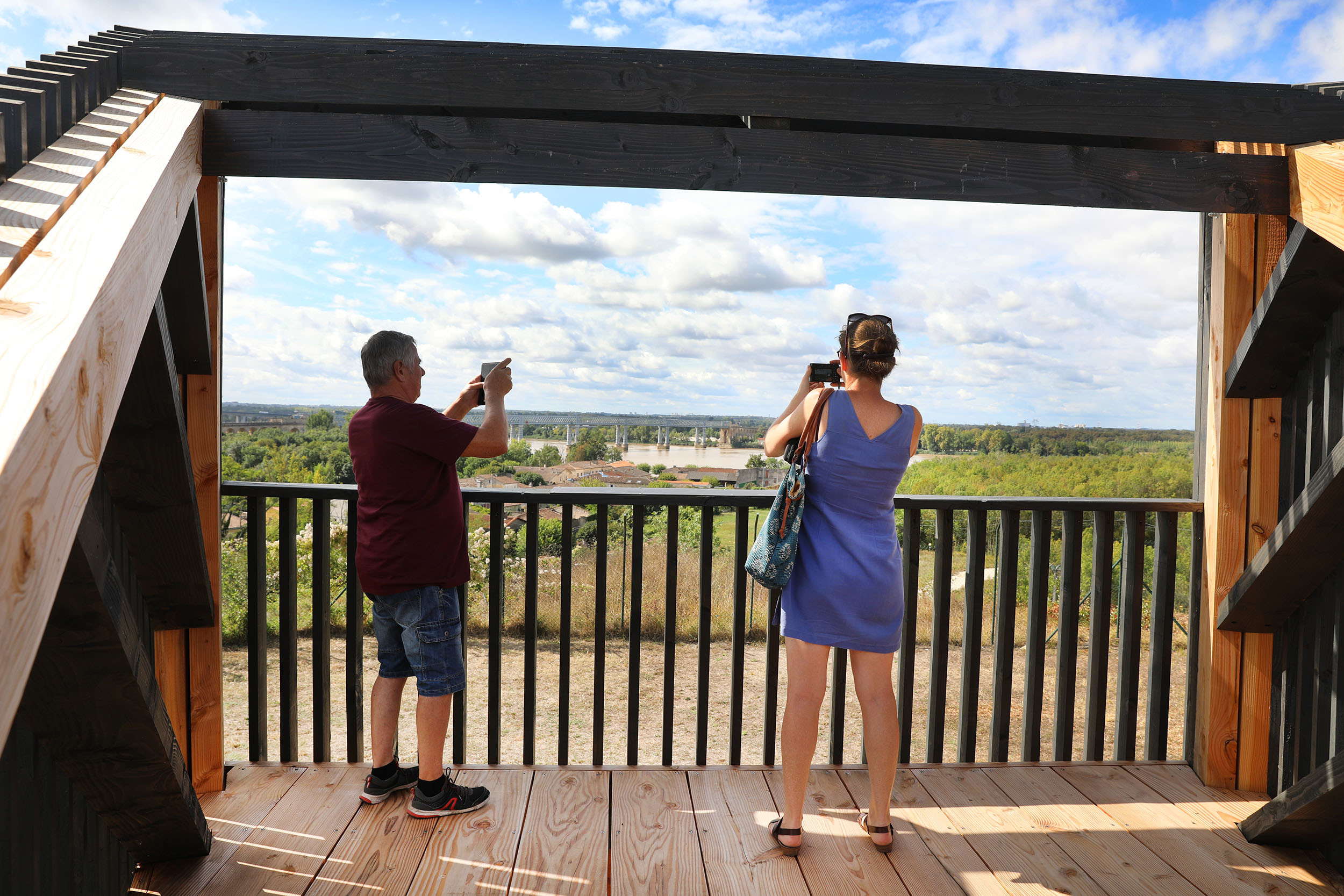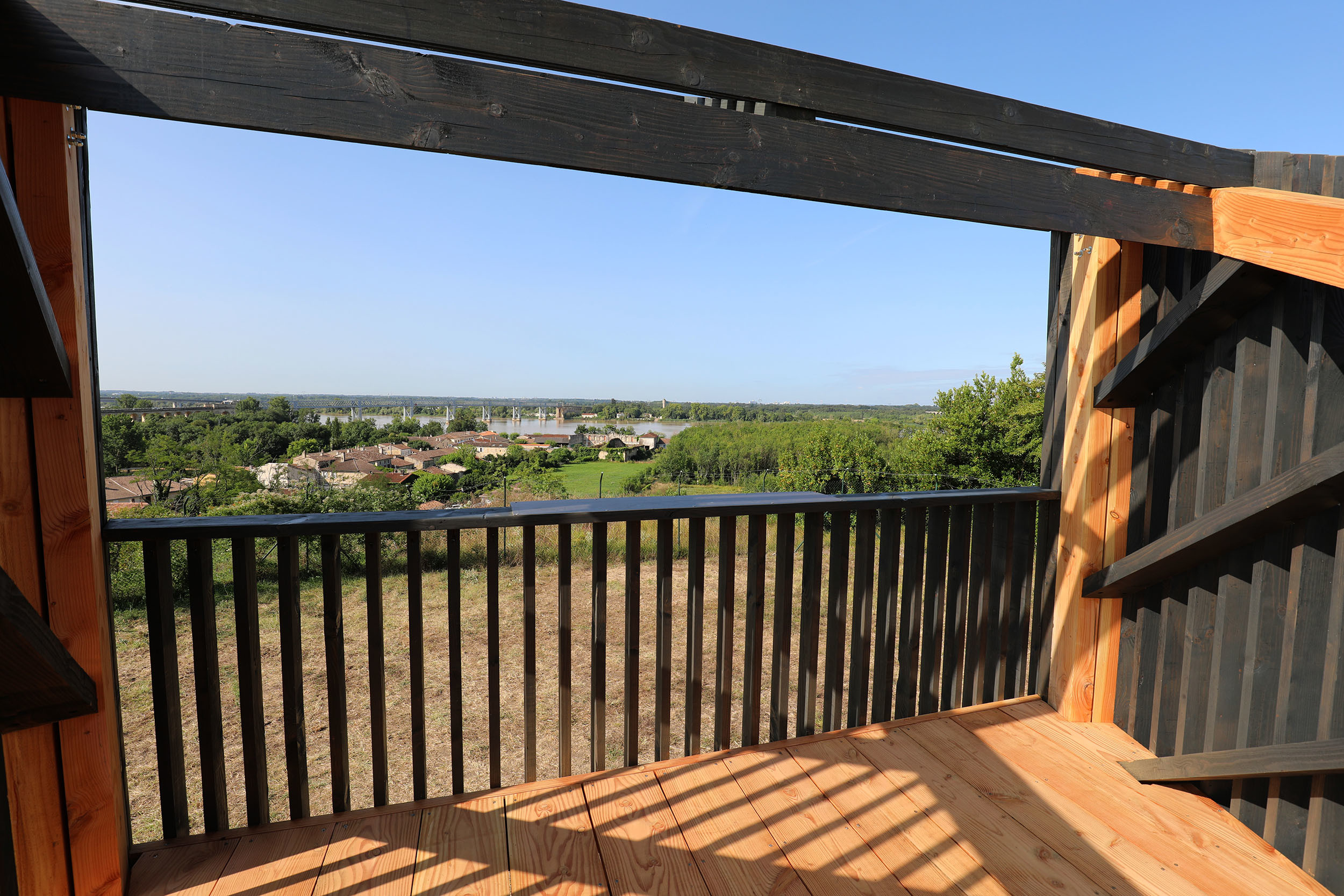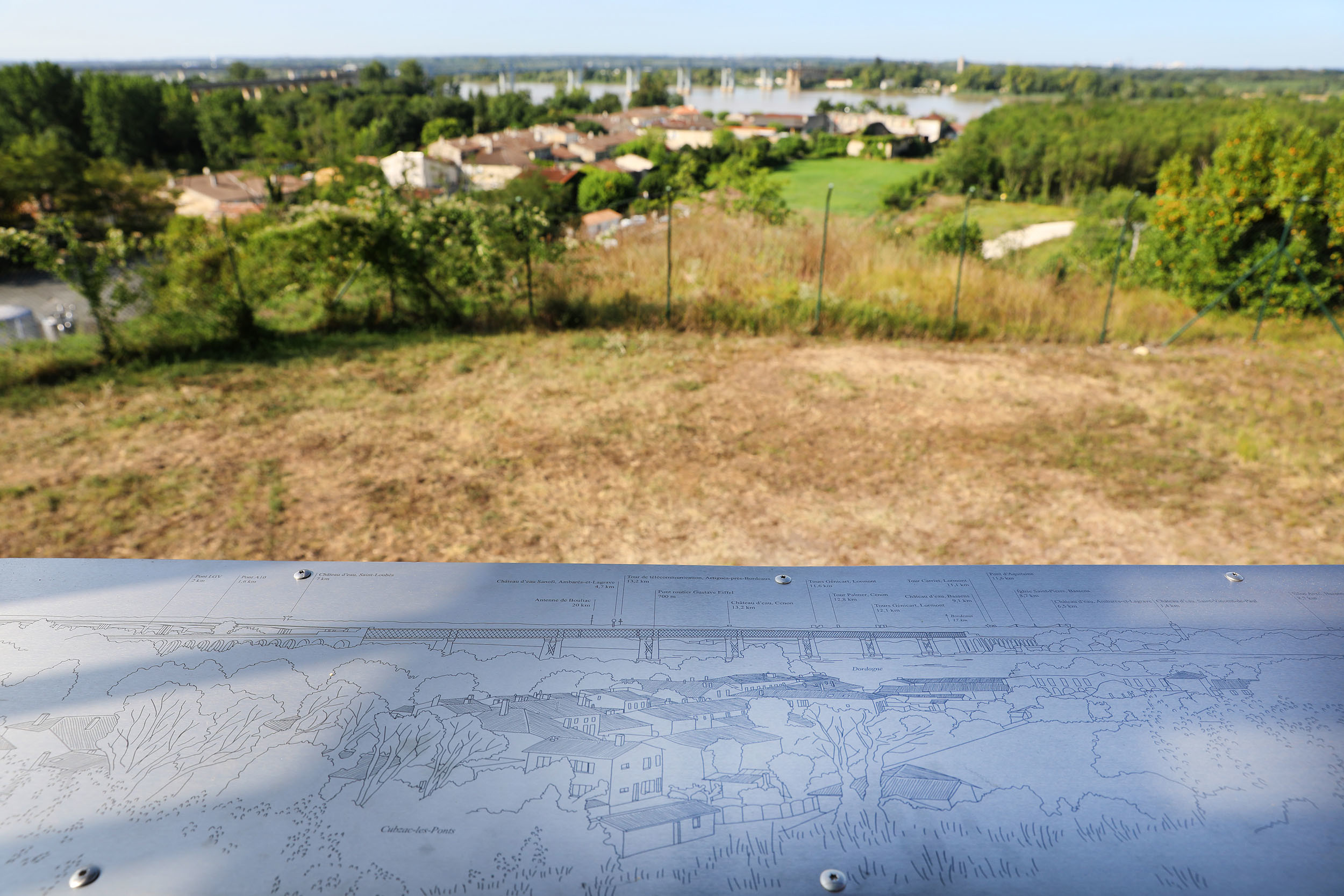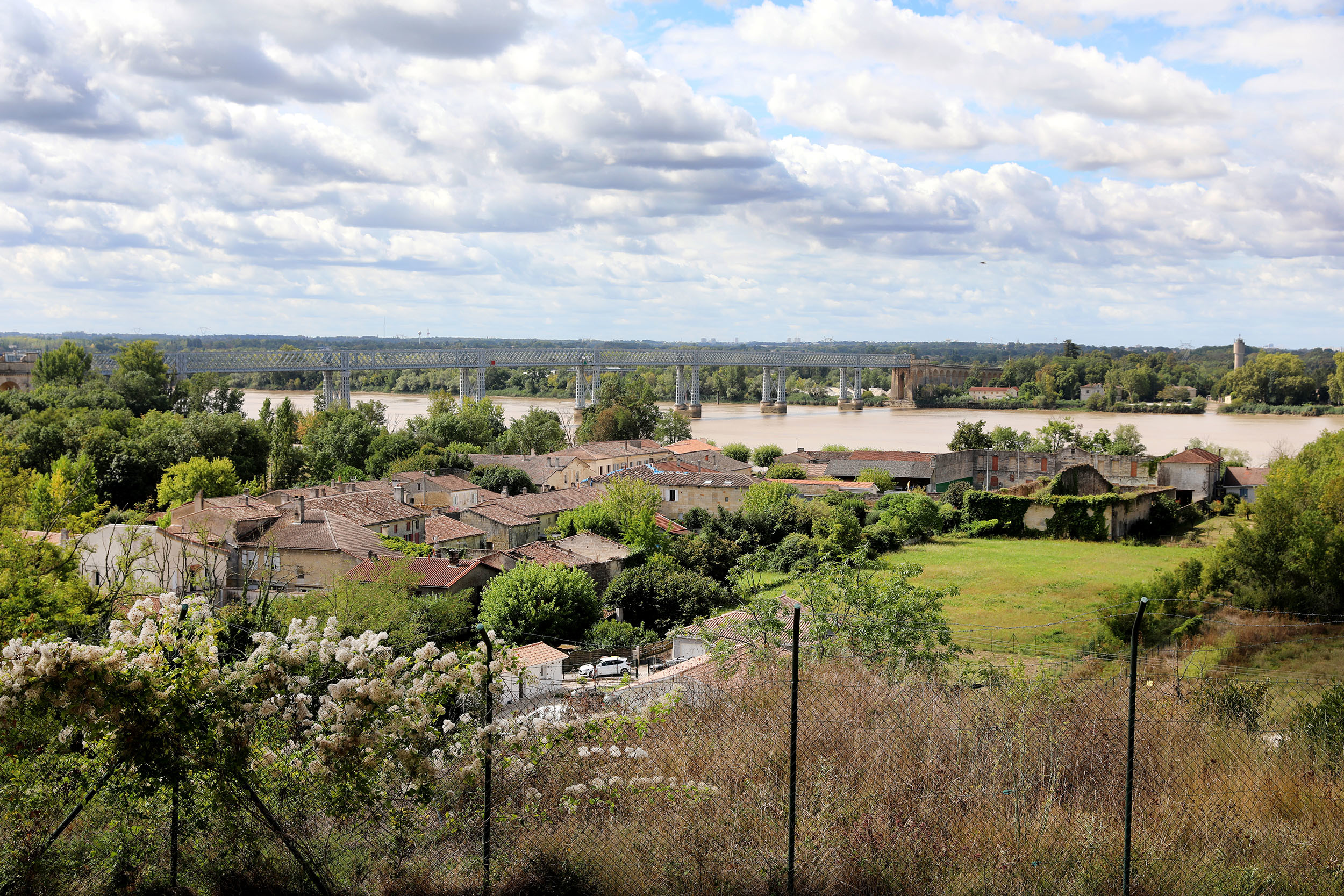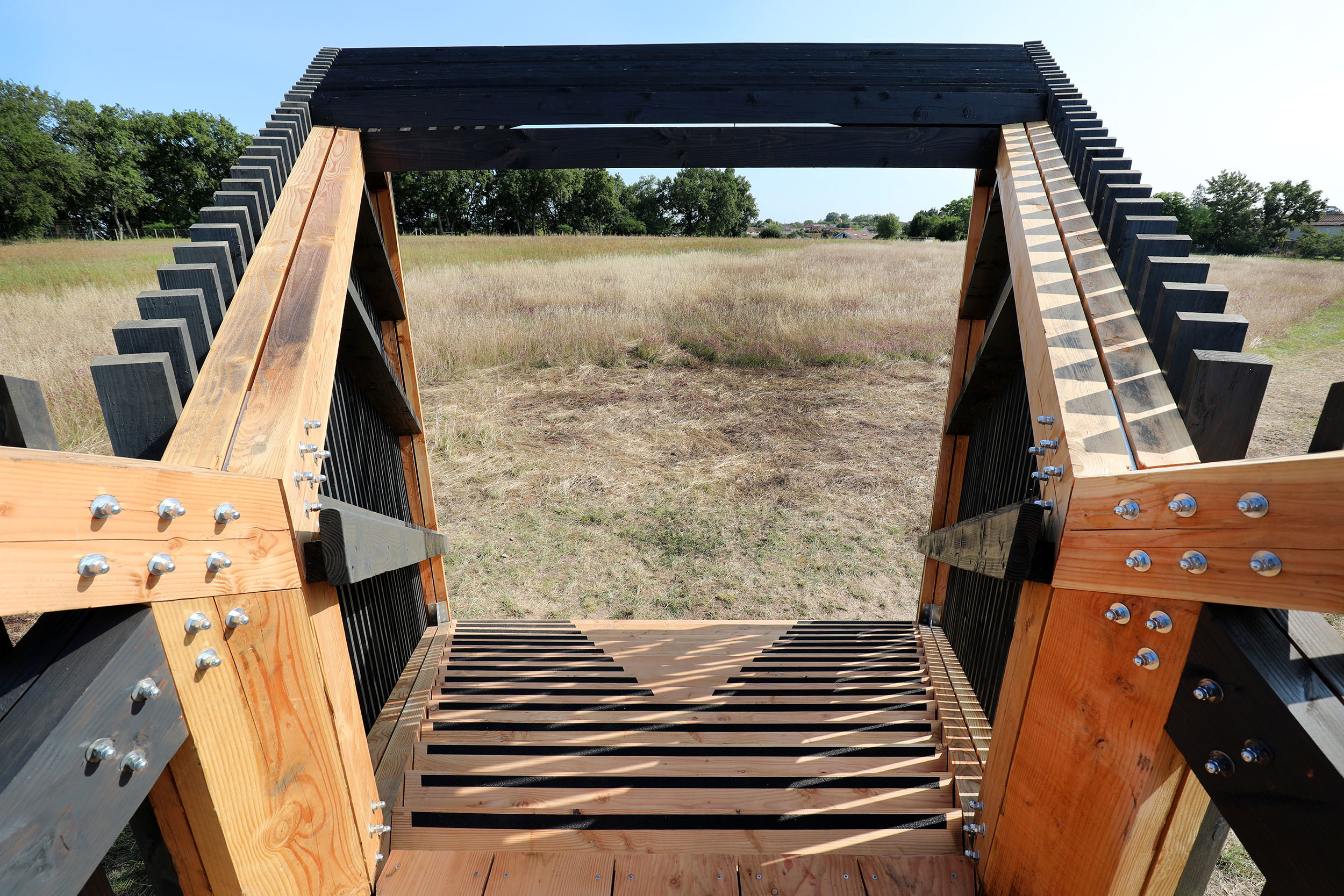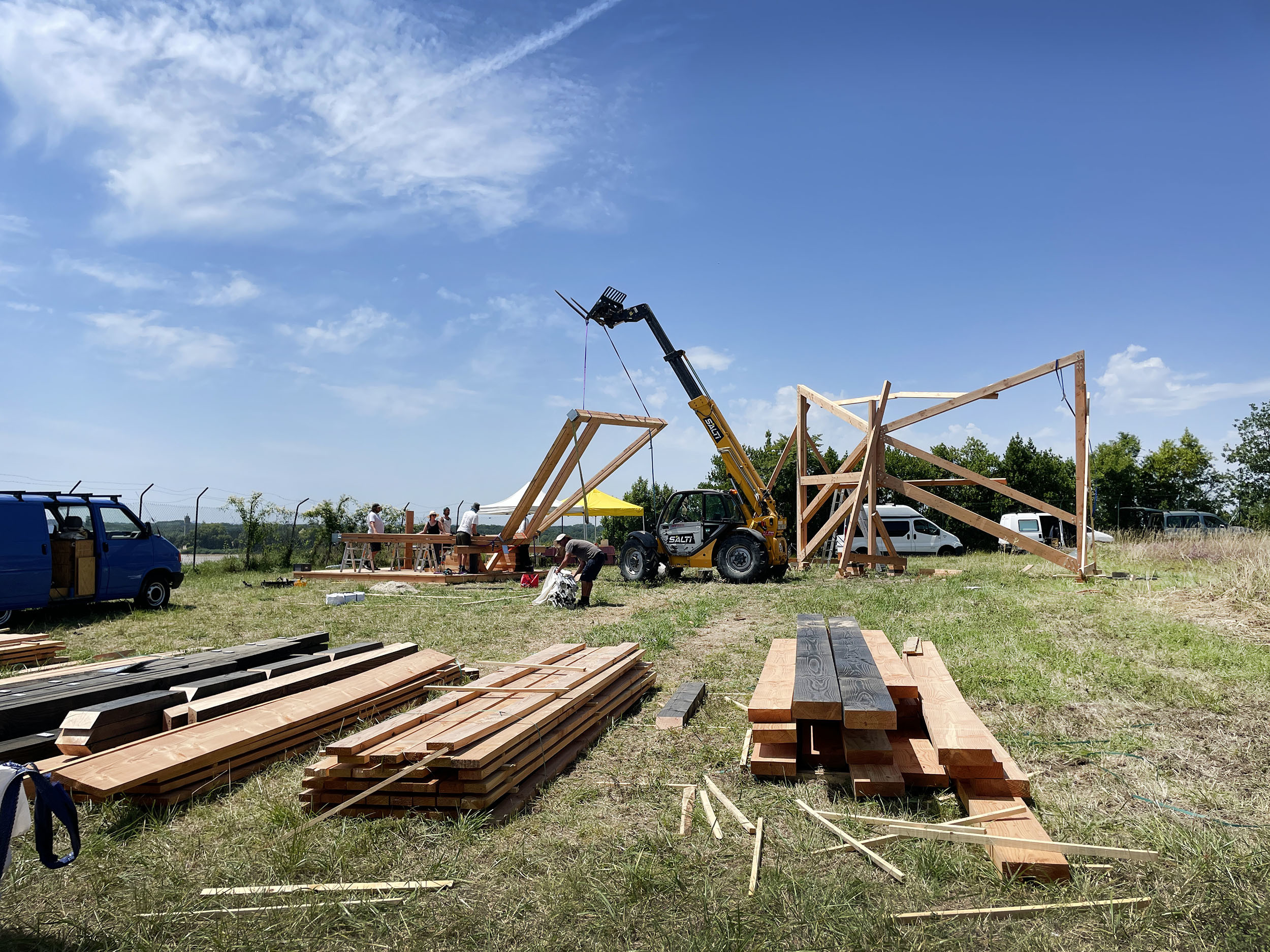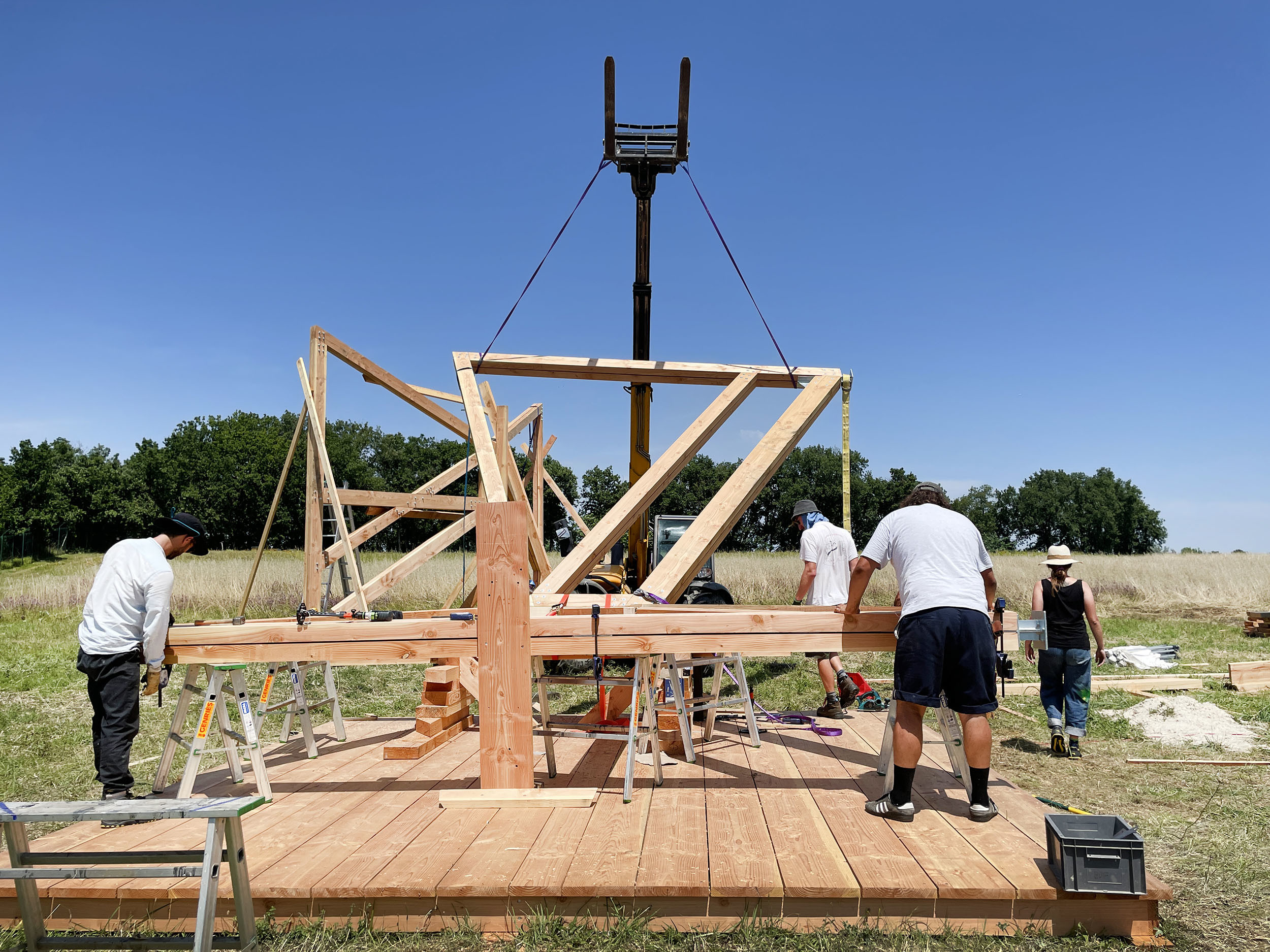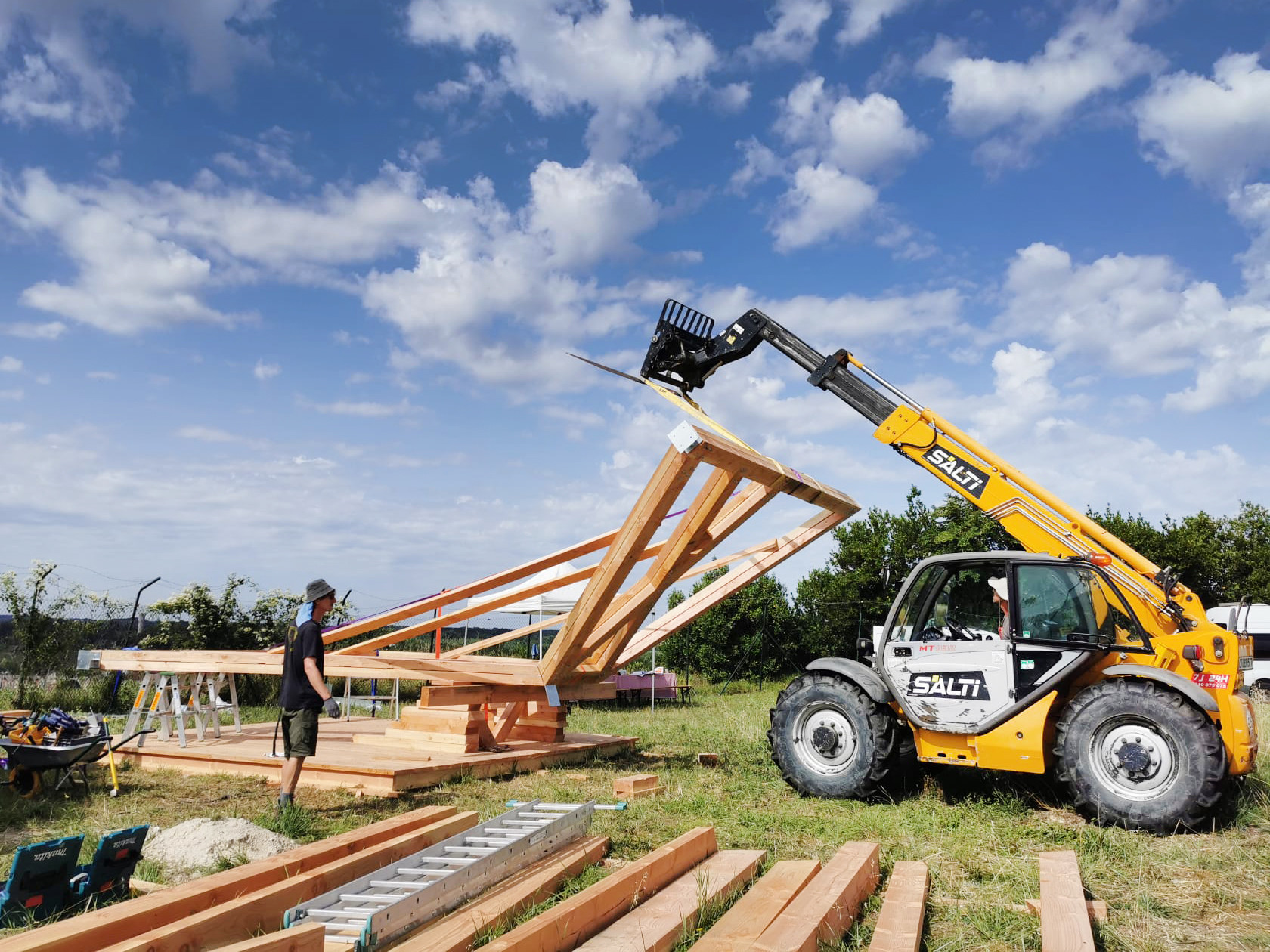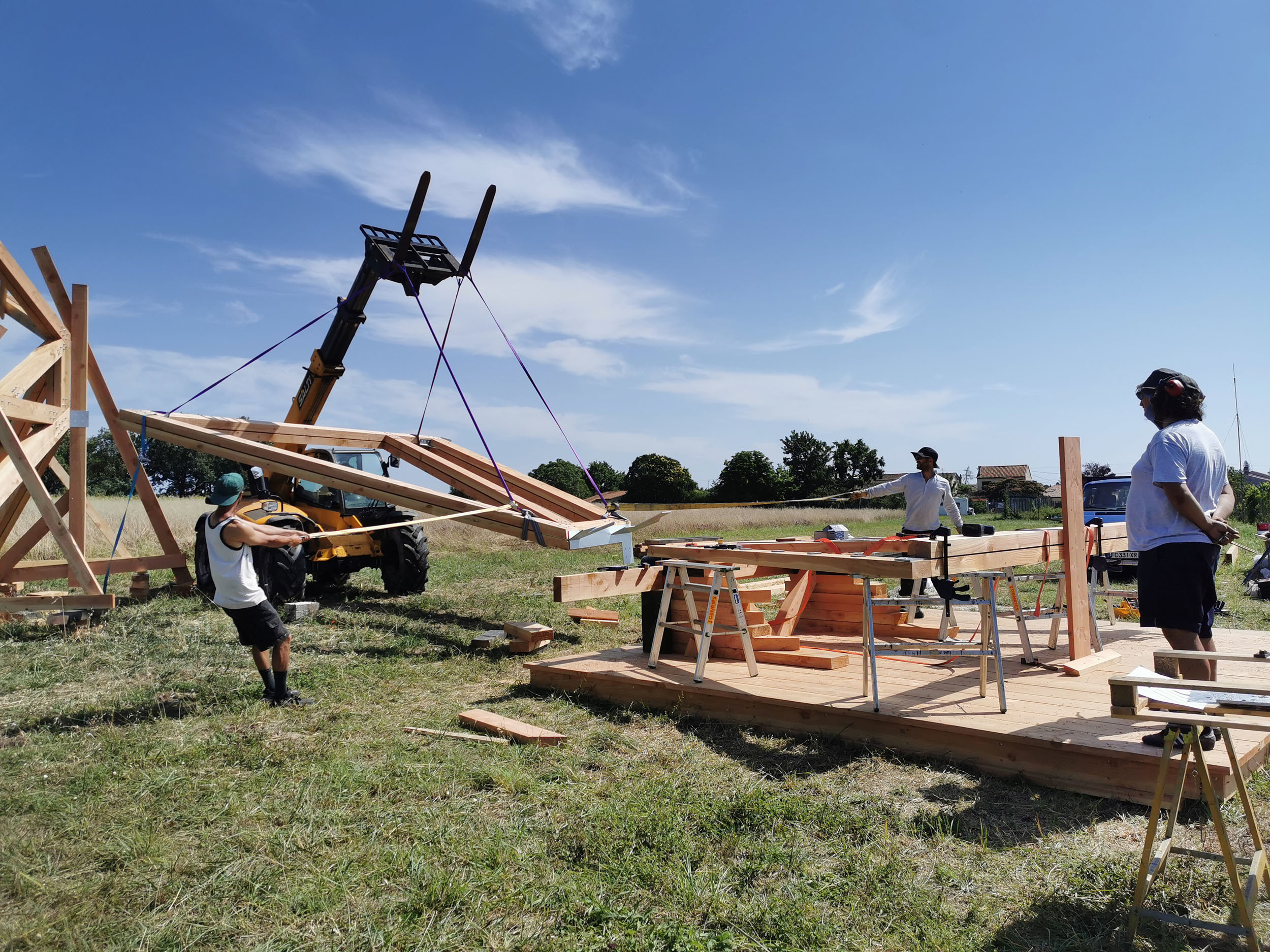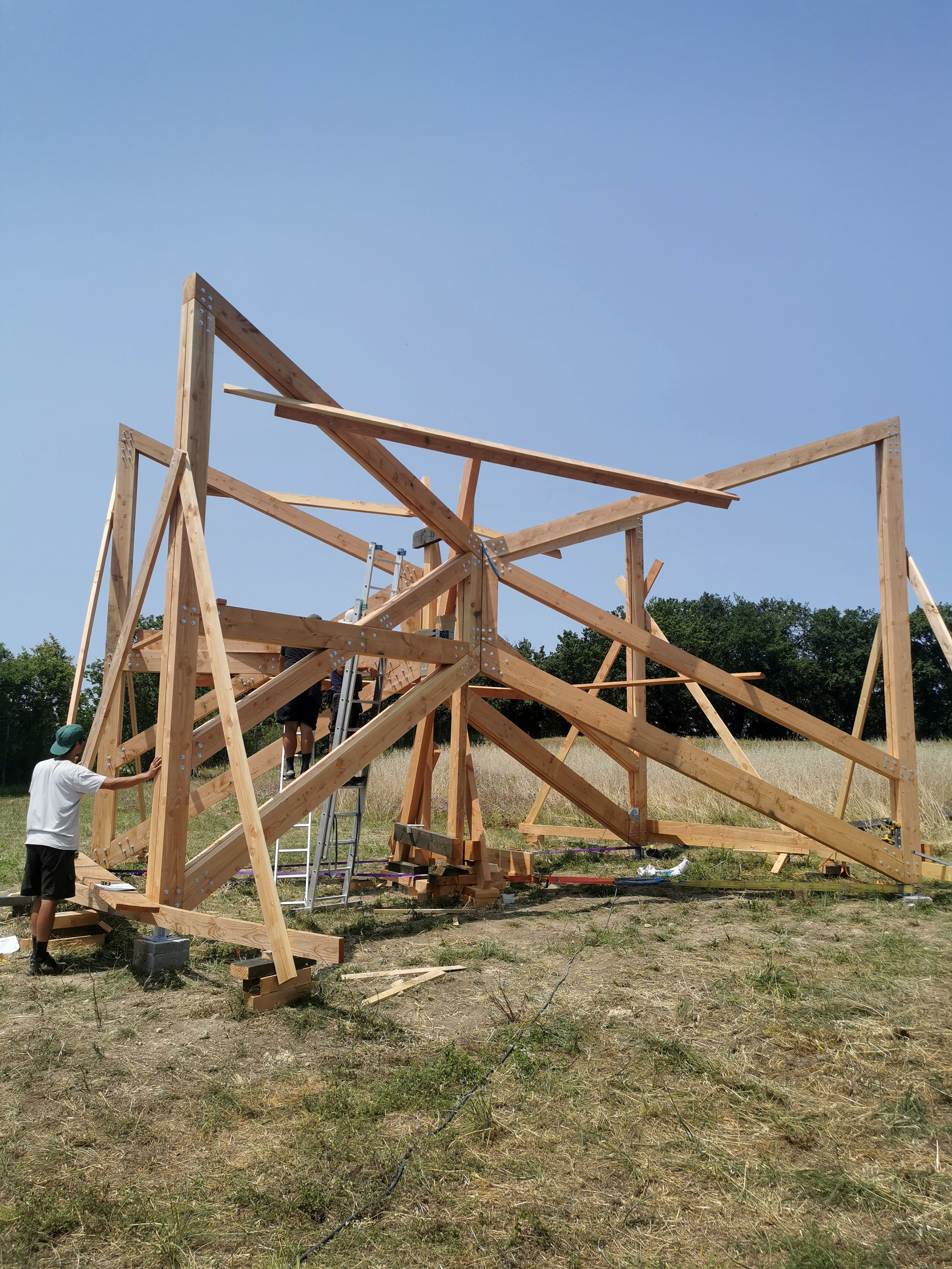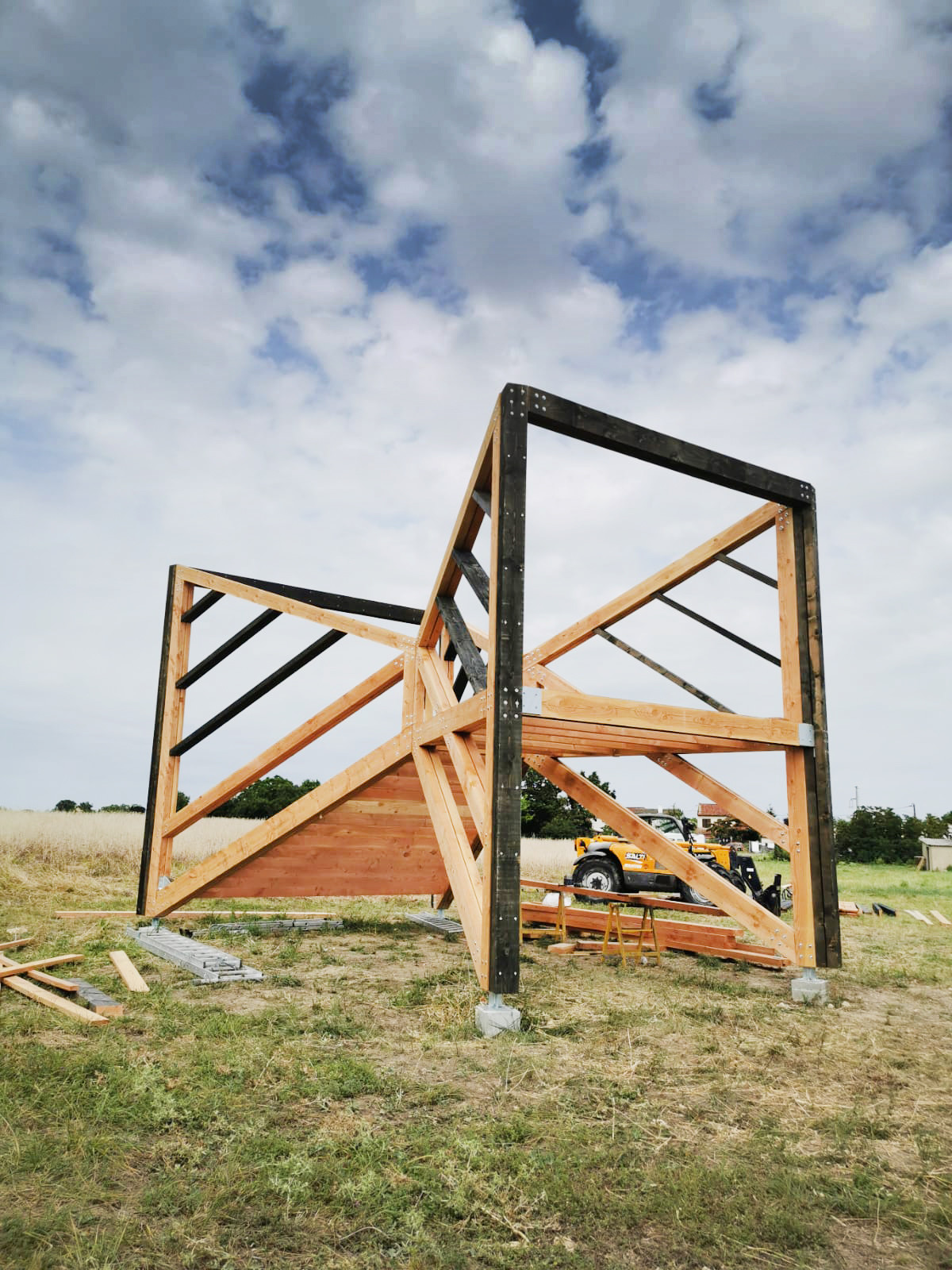
August 2023
The Koniscope
Cubzac-les-Ponts

An observatory at the gateway to Bordeaux
The Koniscope is a lookout installed on the edge of a cliff on the vast Quatre-fils-Aymon plateau overlooking the town of Cubzac-les-ponts, north of Bordeaux. This observatory offers visitors a spectacular panoramic view over the rooftops of the village and the 4 bridges spanning the Dordogne (the 1886 metal railway bridge, the 1883 Eiffel road bridge, the A10 highway bridge and the new high-speed rail bridge). You can also see the main landmarks of the Bordeaux conurbation in the distance: the silos in the industrial port of Bassens, the Pont d’Aquitaine bridge, the towers of Lormont, the telecommunications tower in Artigues-près-Bordeaux, the antenna in Bouliac, the many water towers, etc.
The belvedere takes its shape from the pyramidal cone used in bellows cameras, optical prism, cathode ray tubes and pinhole cameras. Two cones are placed back to back, each opening up a different point of view: towards the landscape in the distance from its observation platform, and towards the meadow from its wide staircase, which can also be used as a tiered seating area for events.
The site belongs to the Café de Paris company, which produces sparkling wine in the factory at the foot of the cliff. Since the Middle Ages, the plateau on which the Koniscope stands has been a geographically strategic location on the banks of the Dordogne and at the gateway to Bordeaux, as evidenced by the many defensive constructions that have been built over the years, including the ruins of the Château des Quatre-fils-Aymon. The plateau is also home to a network of 1.5 km of galleries dug out since the 18th century to extract building stone and later to serve as cellars for maturing wine.
The creation of the belvedere is part of a wider project to enhance and open up this remarkable historical and geographical site to the public, led by the Café de Paris company in partnership with the municipality of Cubzac-les-Ponts.
Last
projects
> all projectsAt the crossroads of art, territories and populations, our approach aims to promote the transition to sustainable, shared and welcoming cities, by proposing alternative ways of imagining and building our living environment and by exploring new forms of public space.


The Secret Balconies # 3 – The Pinède balcony
Montpellier

Common lands trail
Exhibition Nouvelles Saisons, arc en rêve centre d'architecture Bordeaux
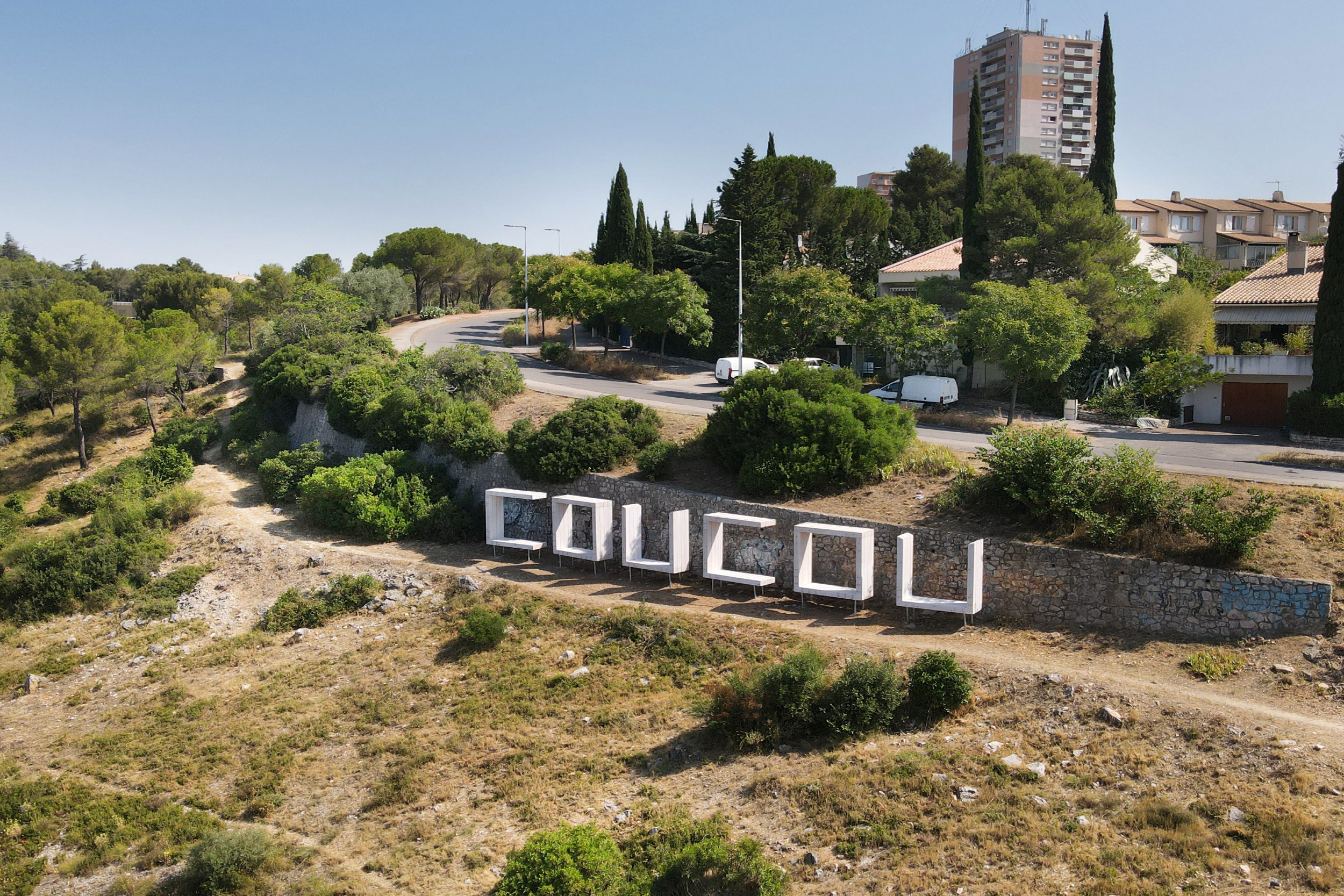
The Secret Balconies # 2 – Balcony des Hauts de Massane
Montpellier

The Secret Balconies # 1 – Balcony Larzac
Montpellier

The Portable Public Spaces
Lyon
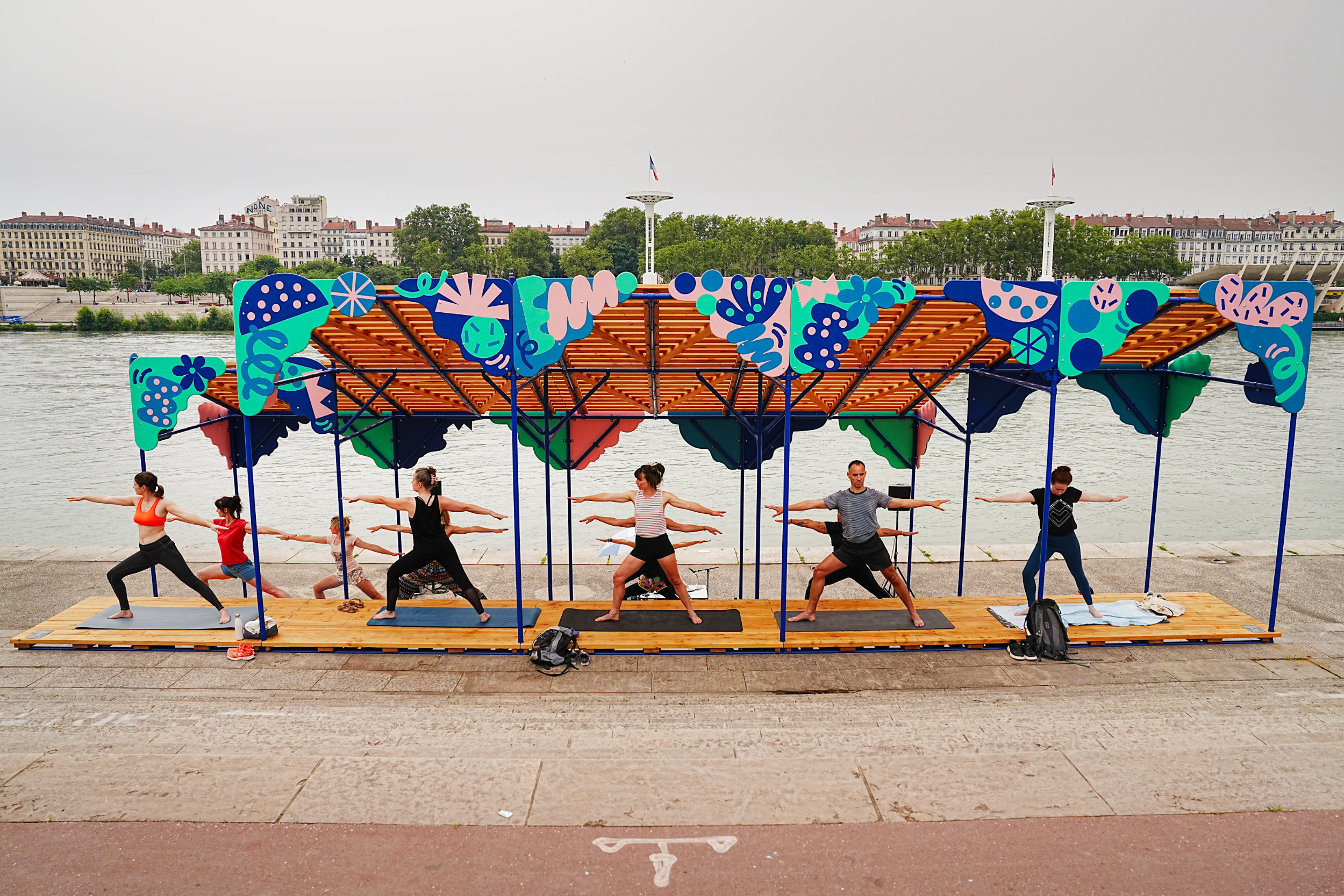
Modular shade canopy
Lyon




